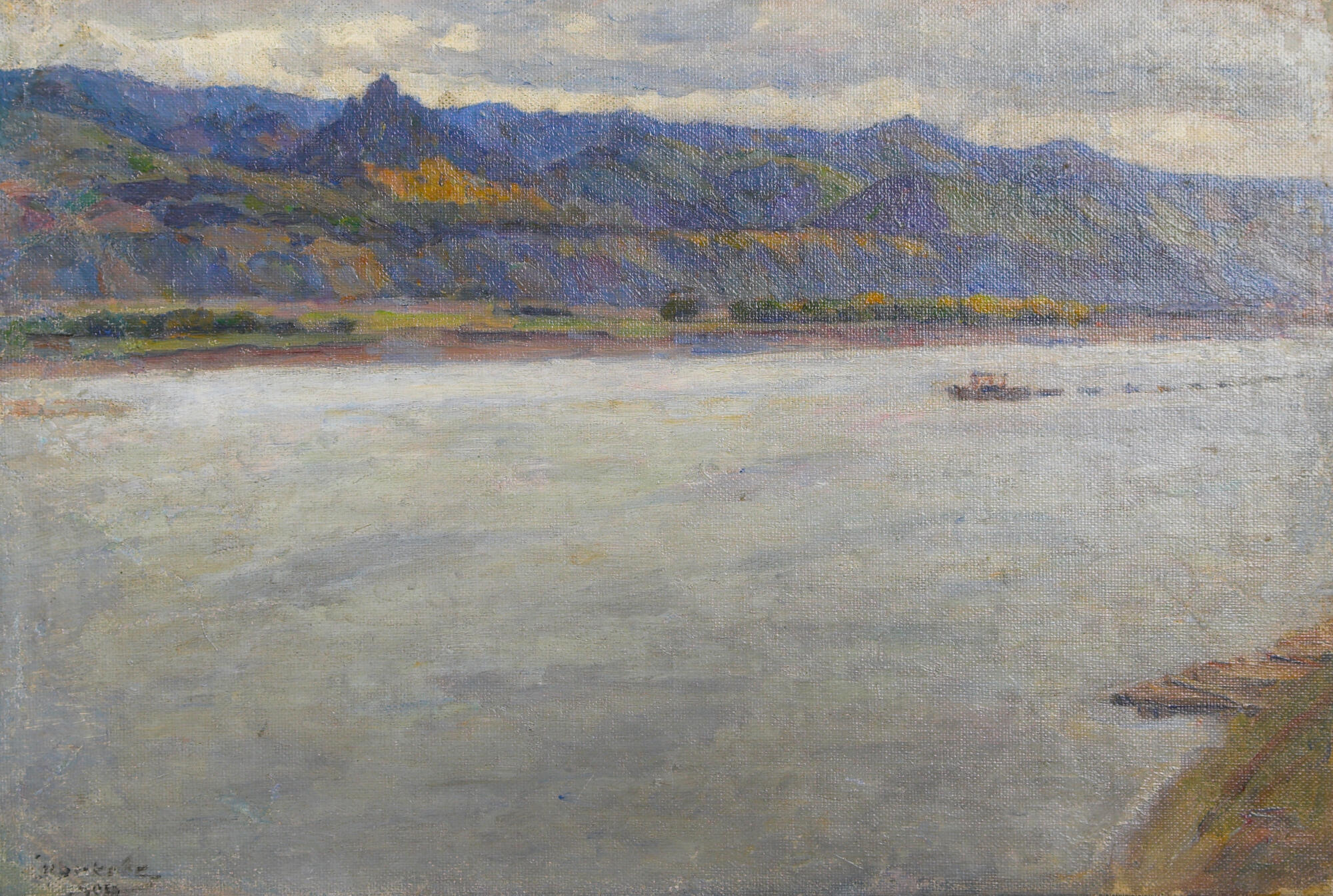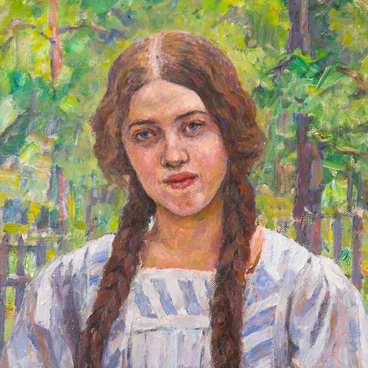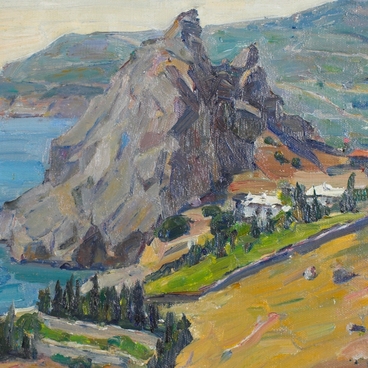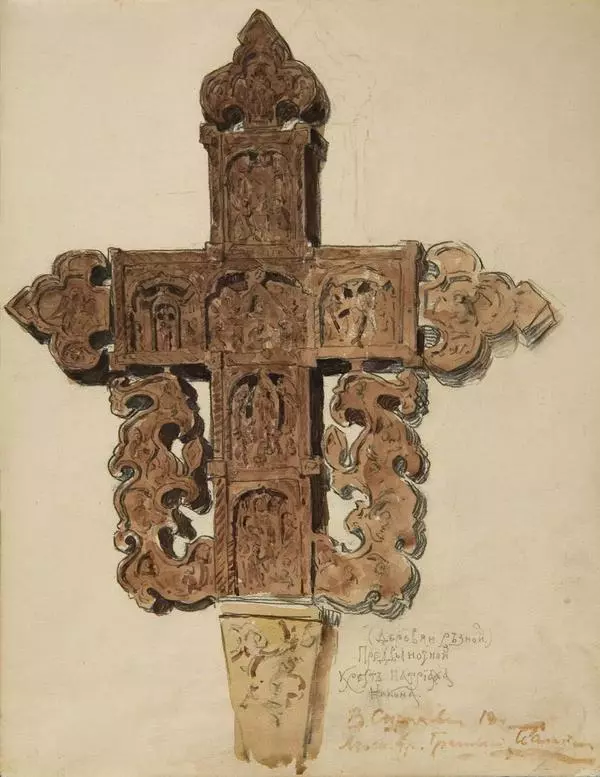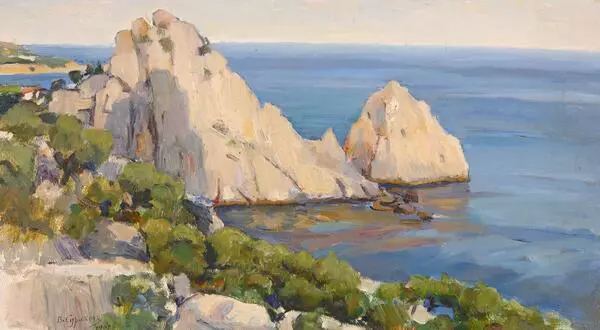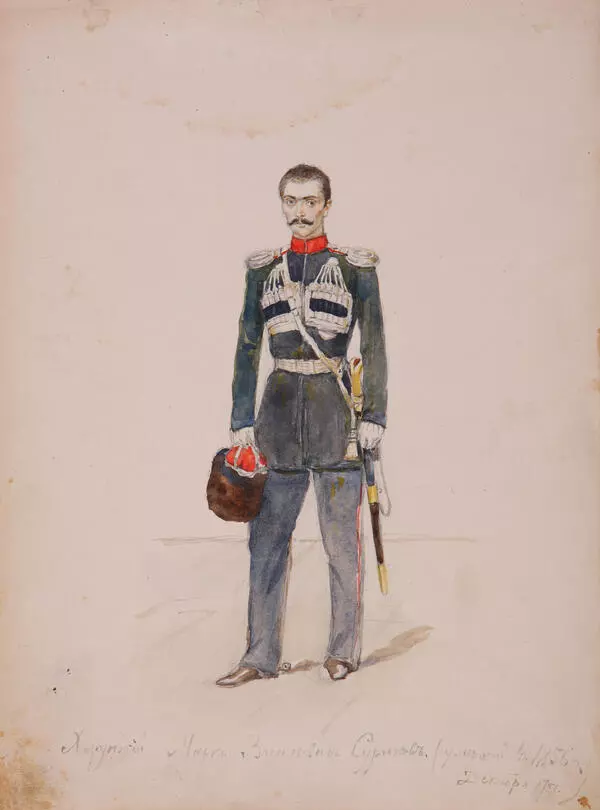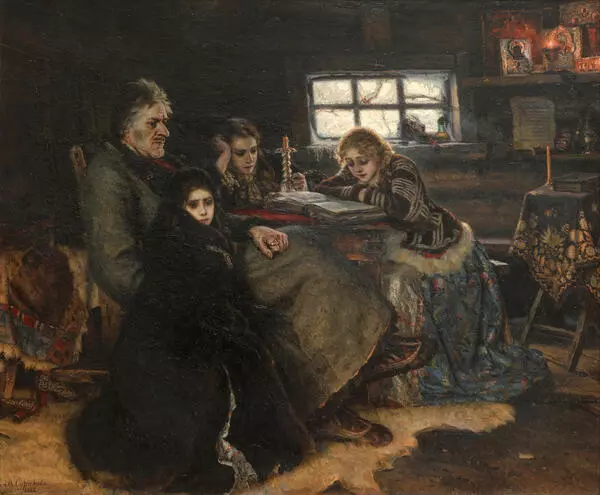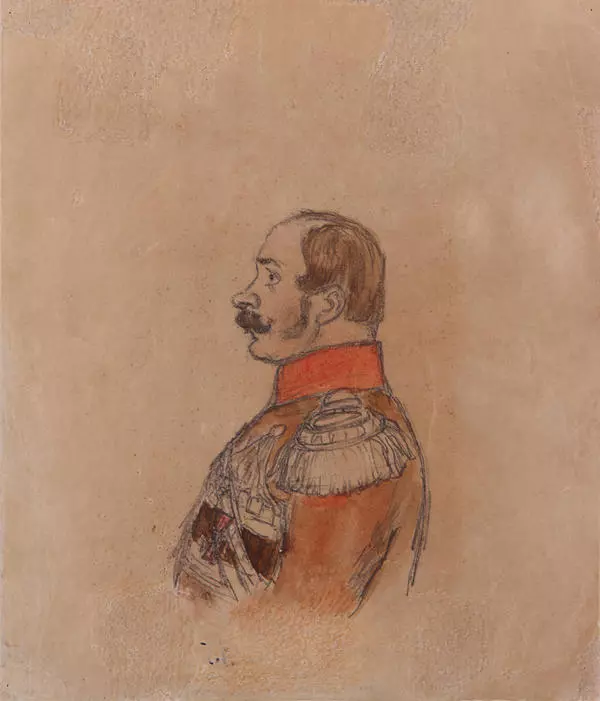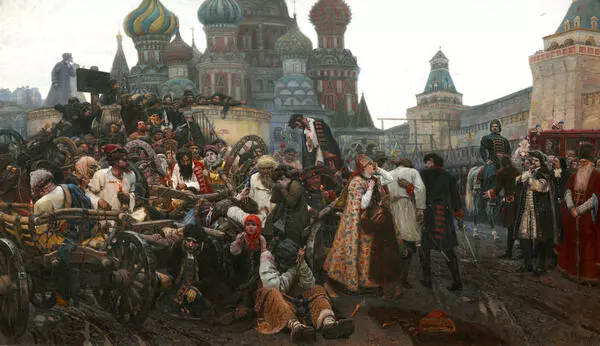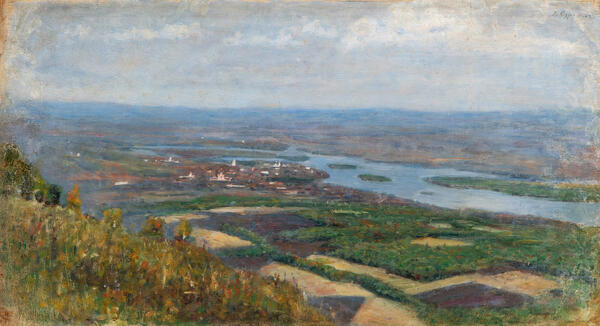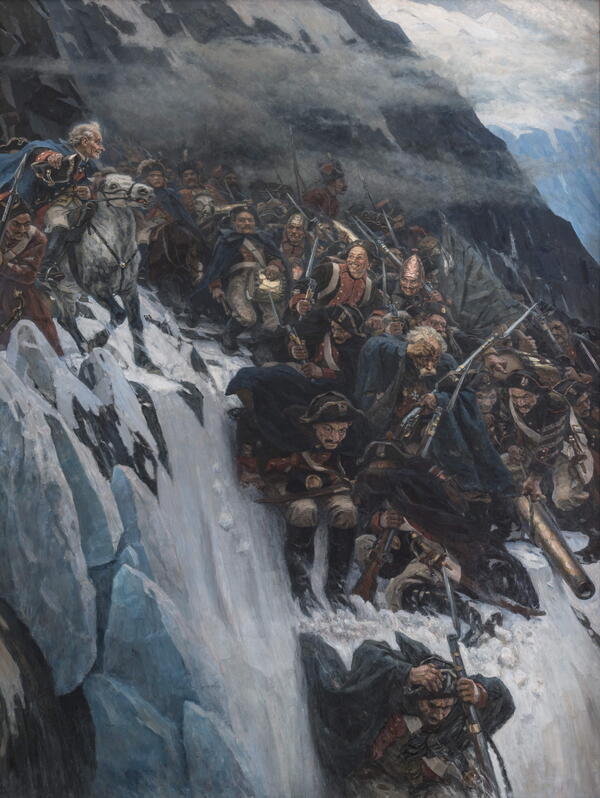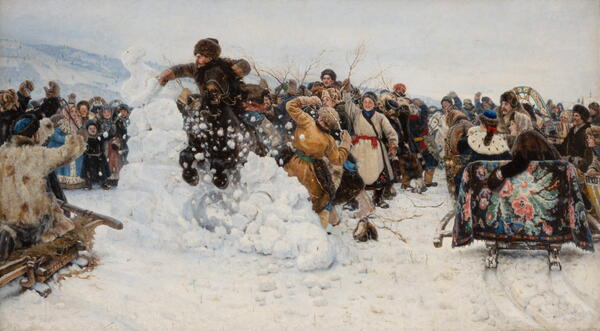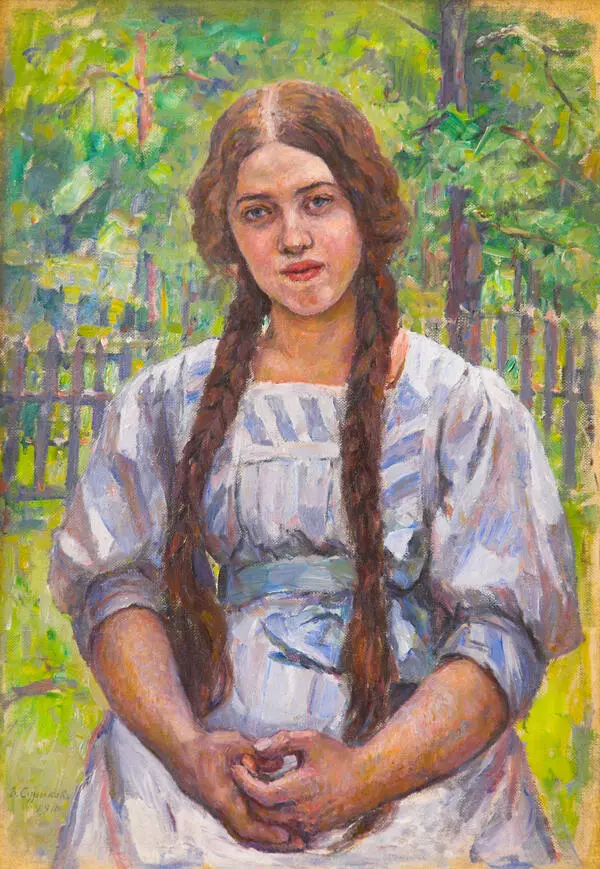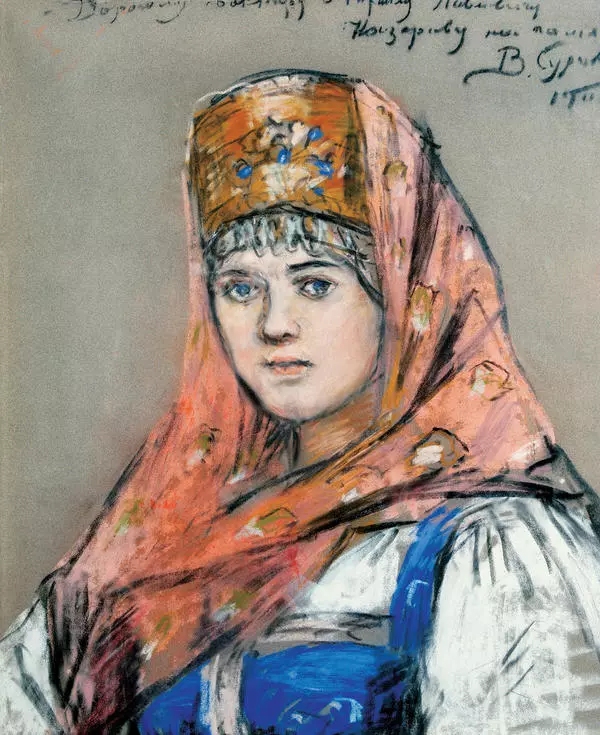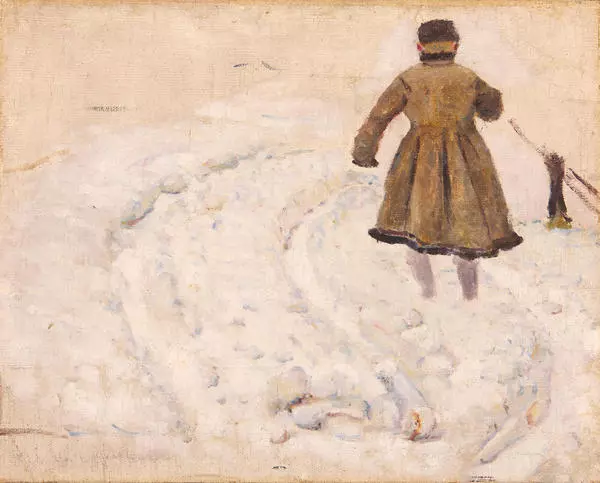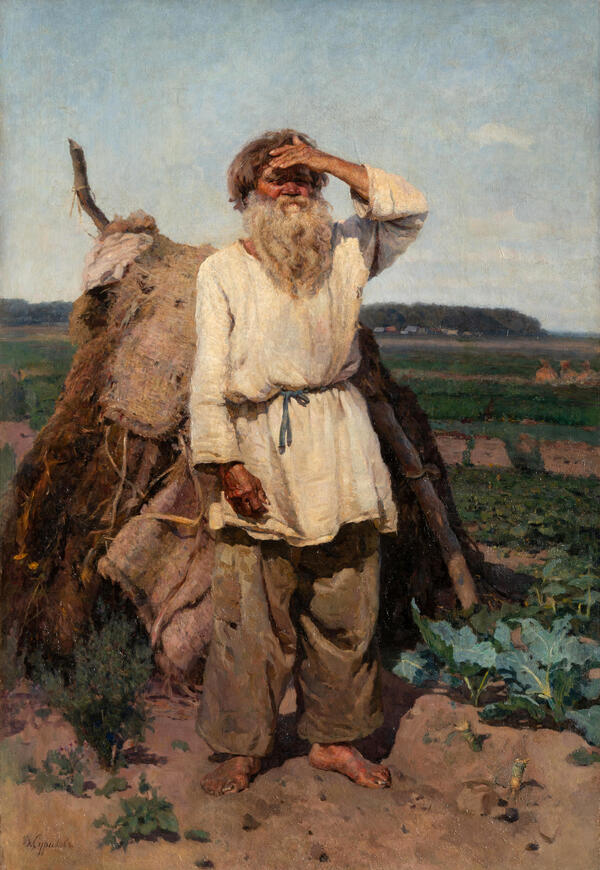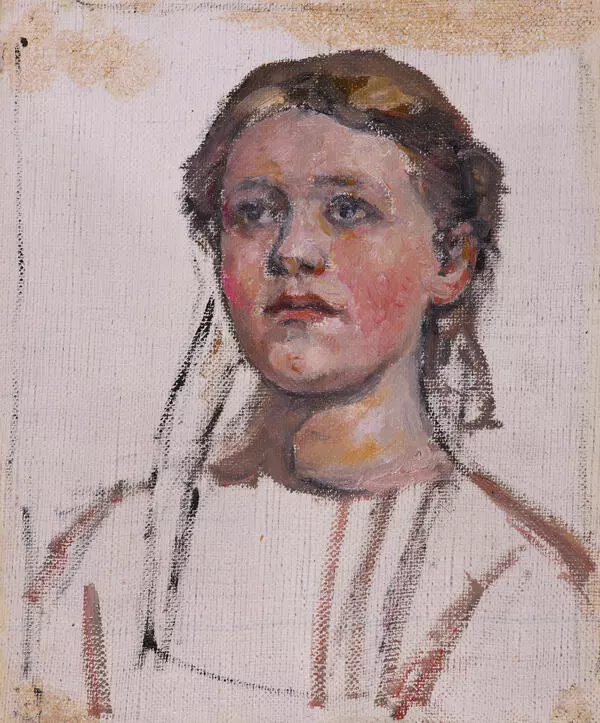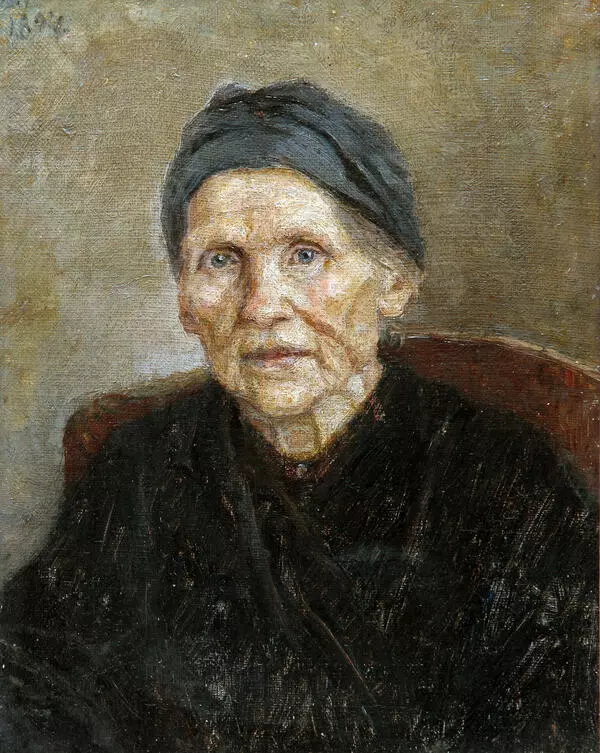Vasily Surikov was born in January 1848 in Krasnoyarsk. He was from an old Cossack family: the ancestors of the future artist in the 16th century came to Siberia from the river Don with leader — ‘ataman’ Ermak. When Surikov was 20 years old, he went to St. Petersburg, but often came to his home city. Here, in Krasnoyarsk, the artist painted his artwork ‘Capturing the snow fortress’, here he made sketches for the historical painting ‘Siberia’s Conquest by Ermak Timofeevich’. Artworks related to Krasnoyarsk, where his father’s house was located and his beloved mother and brother lived, play a special role in Surikov’s artistic work.
The Surikov house was located not far from Karaulnaya Mount. The artist spent there many hours with his sketchbook. He liked climbing not only Karaulnaya Mount, but also the hill located to the west from Krasnoyarsk. From that hill Surikov could enjoy a wonderful view of the city, the power of the river Yenisei, look at the right shore of the river with the Takmak mountain. He painted many landscapes with this wide and powerful river and mountain peaks
In 1909, Vasily Surikov and his younger daughter Elena came to Krasnoyarsk after seven years. From there he wrote to his family in Moscow: “Yesterday Krutovskys, Kuznetsovs, Lena and me went to their country houses near Yenisei. I liked so much those wonderfully dressed autumn trees The sun was shining…” During his stay in Krasnoyarsk, the artist painted several landscape pictures in his own special way — a majestic panorama of mountains in the background and the water surface of the river. Three of them are known: “Yenisey river near Krasnoyarsk”, “Mountains near Krasnoyarsk” and “ Yenisei pontoon boat’.
In the artwork ‘Yenisei pontoon boat’ the artist depicted the clear autumn day. A pontoon boat is a cargo ship, a barge with high sides. In the foreground of the picture there is sparkling silvery blue water, in the distance you can see the majestic Takmak mountain with its proud silhouette. Surikov painted this mountain peak many times, this mount can be seen from all points of the left bank of the river where Krasnoyarsk is located. The severity and power of the Siberian nature looked attractive for the artist, and this monumental mountain was a symbol of this power. However, the painting can not be called dramatic: in Surikov’s color representation, the severe beauty of Siberia looks lyrical and touching.
The Surikov house was located not far from Karaulnaya Mount. The artist spent there many hours with his sketchbook. He liked climbing not only Karaulnaya Mount, but also the hill located to the west from Krasnoyarsk. From that hill Surikov could enjoy a wonderful view of the city, the power of the river Yenisei, look at the right shore of the river with the Takmak mountain. He painted many landscapes with this wide and powerful river and mountain peaks
In 1909, Vasily Surikov and his younger daughter Elena came to Krasnoyarsk after seven years. From there he wrote to his family in Moscow: “Yesterday Krutovskys, Kuznetsovs, Lena and me went to their country houses near Yenisei. I liked so much those wonderfully dressed autumn trees The sun was shining…” During his stay in Krasnoyarsk, the artist painted several landscape pictures in his own special way — a majestic panorama of mountains in the background and the water surface of the river. Three of them are known: “Yenisey river near Krasnoyarsk”, “Mountains near Krasnoyarsk” and “ Yenisei pontoon boat’.
In the artwork ‘Yenisei pontoon boat’ the artist depicted the clear autumn day. A pontoon boat is a cargo ship, a barge with high sides. In the foreground of the picture there is sparkling silvery blue water, in the distance you can see the majestic Takmak mountain with its proud silhouette. Surikov painted this mountain peak many times, this mount can be seen from all points of the left bank of the river where Krasnoyarsk is located. The severity and power of the Siberian nature looked attractive for the artist, and this monumental mountain was a symbol of this power. However, the painting can not be called dramatic: in Surikov’s color representation, the severe beauty of Siberia looks lyrical and touching.
